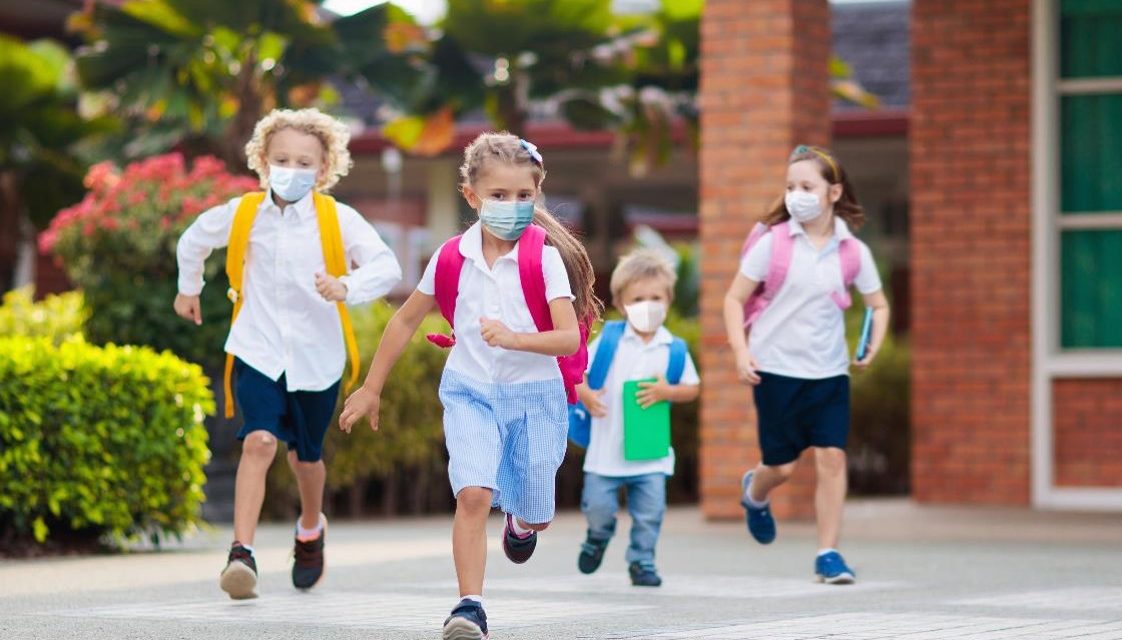Covid measures help improve classroom attentiveness.
Over the last four months, building performance technology provider Tether has installed hundreds of its devices at private schools across New Zealand in partnership with the Independent Schools of New Zealand (NZ).
In addition to a safer environment, children are using the technology to learn about air quality, said Tether chief executive Brandon van Blerk.
Van Blerk said the goal of the rollout is to create a robust data set about the condition of indoor air quality in New Zealand’s schooling system to improve both the utility costs (heating, cooling, etc.) and the academic performance of students.
“We knew the indoor air quality of Kiwi schools is, on average, poor – based on what teachers have told us. This estimate has been largely confirmed using our sensors.”
Tether’s devices use a science-driven, data-first approach to understand the ventilation rates and thermal comfort levels while analysing an indoor environment to find the right solution to improve air quality.
“The market is full of information about heat pumps or air-changing systems meant to solve air quality problems. Unfortunately, only data and analysis can ascertain the correct solution for a specific environment, which is what Tether does best,” van Blerk said.
The partnership with ISNZ follows a successful project with Shelly Park school in Auckland. In October 2020, Tether installed approximately 50 of its sensors across classrooms at the school.
Van Blerk said that the project revealed impressive decreases in Covid-19 contraction risk and increased student attention spans and cognitive ability due to lower carbon dioxide levels.
“A maintenance manager at one of our schools was watching the data displayed by the Tether devices and noticed the carbon dioxide levels in a classroom spiking dramatically. The manager informed the teacher, who opened more windows to mitigate the problem.
“The maintenance manager returned a few hours later, and the teacher happily commented that the students were visibly more attentive and had more energy as a result,” van Blerk said.
Tether will continue its device rollout among independent schools, which van Blerk hopes will reveal some more profound insights about how to mitigate poor air quality in New Zealand buildings.
“New Zealand has the second-highest rate of asthma in the OECD because of our bad indoor air quality. After Covid-19 becomes endemic, I hope that the spotlight will stay on indoor air quality and people will think about it more. We certainly don’t want to live in a world where viruses spread more easily because our indoor environments are so terrible,” van Blerk said.
Van Blerk offered a few tips for schools thinking about cost-efficient ways to improve the air quality in their buildings.
- Aim for trend data
Portable air quality sensors are great for testing any room. But the data generated from portable sensors cannot offer insights into the air quality in a room over time. That’s where trend data is so important, said van Blerk.
“A static sensor will display how a room responds to changes in airflow and quality over time. A portable sensor can’t do this because it doesn’t have consistent data.
“Tether’s sensors can monitor rooms for multiple weeks or months to reveal when carbon dioxide is rising and when it drops. We can then correlate those data with what may have been going on in the classroom at the time,” van Blerk said.
- Encourage student involvement
An intriguing consequence of Tether’s devices at schools is that teachers use the data in lessons about indoor air dynamics and the impact of air quality on health.
“By installing these systems, students learn how air moves and how their presence in a room affects air quality. This new teaching resource is an added benefit on top of the health and safety mitigation strategy of the school,” he said.
“Students can be involved in the process of creating healthy indoor environments, which creates awareness and becomes a driving force for the rest of their lives. Students are even using Tether’s data as conversation starters to discuss health with friends on Twitter, which is something I didn’t expect to see.”
- Not just schools
Tether’s devices were initially built to help solve the problem of cold, wet, damp and mouldy residential homes. But its core vision is to enable healthy, efficient and sustainable environments in all sorts of buildings, including schools and office spaces.
“Schools are a great place for these devices, but we are keen to talk with corporates, bars, clubs, retail and owners of other commercial buildings. Attention on good indoor air quality is long overdue in every building across New Zealand,” van Blerk said.
For more information visit: https://www.tether.co.nz/













